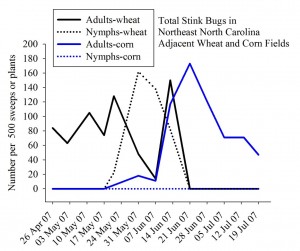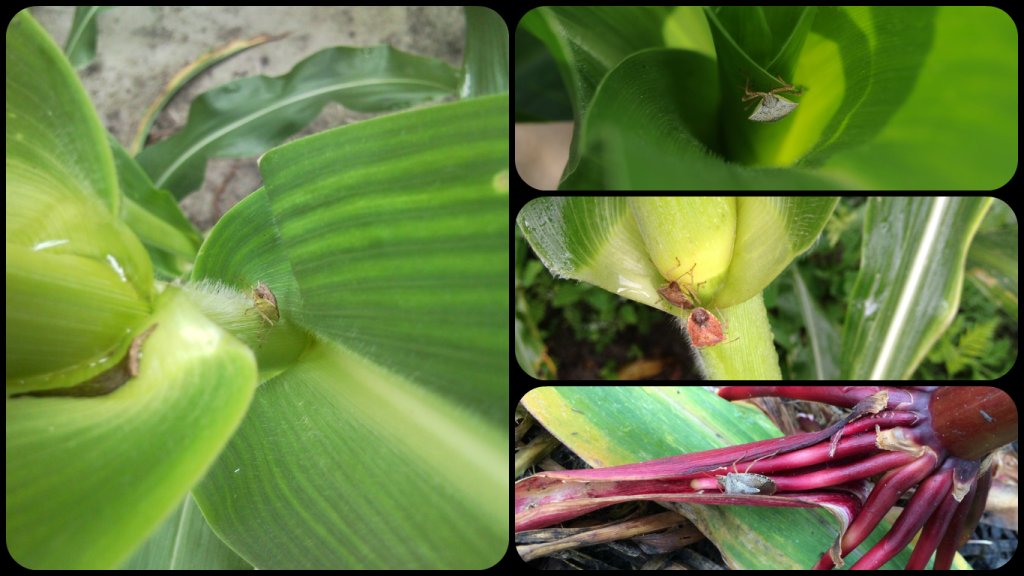Stink Bugs Moving Into Corn
go.ncsu.edu/readext?415460
en Español / em Português
El inglés es el idioma de control de esta página. En la medida en que haya algún conflicto entre la traducción al inglés y la traducción, el inglés prevalece.
Al hacer clic en el enlace de traducción se activa un servicio de traducción gratuito para convertir la página al español. Al igual que con cualquier traducción por Internet, la conversión no es sensible al contexto y puede que no traduzca el texto en su significado original. NC State Extension no garantiza la exactitud del texto traducido. Por favor, tenga en cuenta que algunas aplicaciones y/o servicios pueden no funcionar como se espera cuando se traducen.
Português
Inglês é o idioma de controle desta página. Na medida que haja algum conflito entre o texto original em Inglês e a tradução, o Inglês prevalece.
Ao clicar no link de tradução, um serviço gratuito de tradução será ativado para converter a página para o Português. Como em qualquer tradução pela internet, a conversão não é sensivel ao contexto e pode não ocorrer a tradução para o significado orginal. O serviço de Extensão da Carolina do Norte (NC State Extension) não garante a exatidão do texto traduzido. Por favor, observe que algumas funções ou serviços podem não funcionar como esperado após a tradução.
English
English is the controlling language of this page. To the extent there is any conflict between the English text and the translation, English controls.
Clicking on the translation link activates a free translation service to convert the page to Spanish. As with any Internet translation, the conversion is not context-sensitive and may not translate the text to its original meaning. NC State Extension does not guarantee the accuracy of the translated text. Please note that some applications and/or services may not function as expected when translated.
Collapse ▲ Folks have noted stink bugs moving into corn rapidly over the past week across the Coastal Plain. This is not a surprise, as stink bugs have built up a generation in weeds and wheat and are moving into other hosts, such as corn. Note from the graph to the left that this is only the beginning of the time where we see typical movement into corn. Expect this to continue for the next couple weeks.
Folks have noted stink bugs moving into corn rapidly over the past week across the Coastal Plain. This is not a surprise, as stink bugs have built up a generation in weeds and wheat and are moving into other hosts, such as corn. Note from the graph to the left that this is only the beginning of the time where we see typical movement into corn. Expect this to continue for the next couple weeks.
Keep in mind that effective treatments are all about timing and good timing relies on scouting. Unfortunately a calendar spray will not work well for this insect. Our recommendation is to scout, apply an insecticide when the stink bugs reach threshold (temporarily set at one per ten plants from V8 to VT, to be conservative in 2016, then one per two plants VT to V3, and one per plant R3+), and to re-scout to see if any might have moved back into corn. Management recommendations can be found in this previous article. Recommendations for scouting are below.
– What surrounds your corn? Stink bugs can move from woods, weeds, and wheat. Check the surrounding environment to see if any stink bugs are present that might move into your corn.
– Check field edges first. Stink bugs typically move into corn field edges first. So if they aren’t in the edge, they probably are in the middle. Check all the edges, if possible. If they are in the edge, move farther into the field too see if populations dissipate.
– Check the entire plant. I have seen stink bugs resting in or feeding on almost every part of the corn plant. You need to be a ninja scouter, since stink bugs may notice you coming and hide out in the plant. Stink bugs hiding in the whorl (top right photo) aren’t causing any damage. Stink bugs feeding on the stalk while the ear is developing (far left photo) are what you want to avoid.


